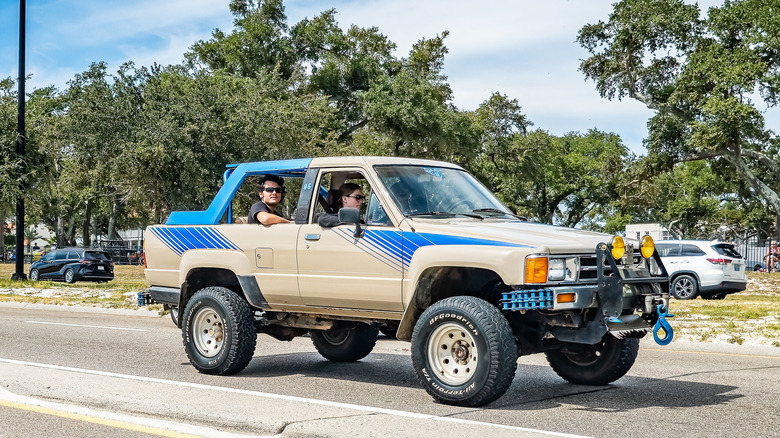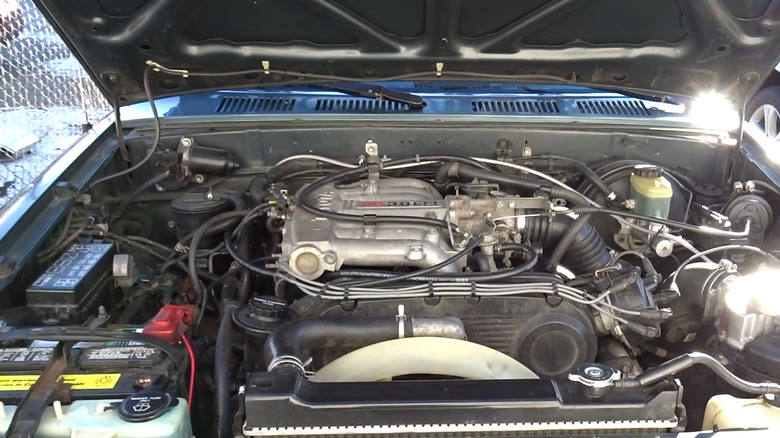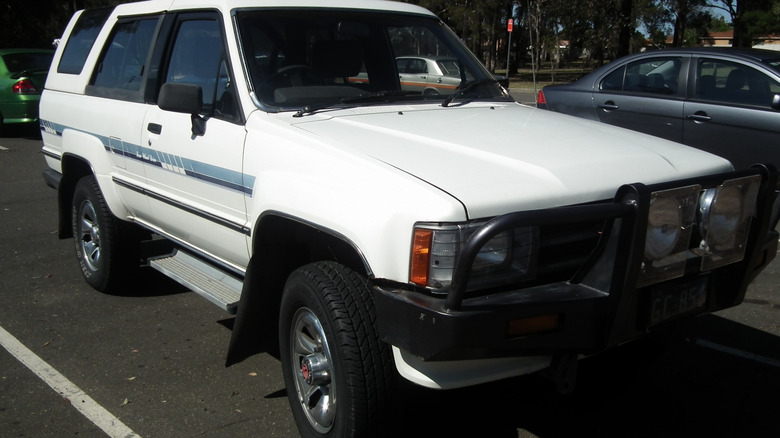This Is The Worst Toyota Engine Ever Made
Toyota's reputation for making durable and versatile vehicles has made it the world's top-selling automaker for five years running and the Corolla, Sienna, and Prius all earned a spot on our list of Toyotas that are cheap to maintain. Toyota has built plenty of impressive engines, although the 3VZ-E 3.0-liter V6 didn't quite land with the brand's customers.
The 3VZ-E was off to a rough start immediately upon its release. The naturally aspirated fuel-injected six delivered a disappointing 150 horsepower at 4,800 rpm and 180 pound-feet of torque at 3,400 rpm. The fact that Toyota saw it fit to drop it in workhorses like the 4Runner and T100 pickup did it no favors, only highlighting its weakness in vehicles where horsepower and torque were most in demand. In addition to its disappointing performance, the 3VZ-E became notorious for serious issues that combined to make it perhaps Toyota's worst engine ever.
The 3VZ-E's cooling system wasn't up to the job
Toyota released the 3VZ-E V6 in the 1988 4Runner, presenting it as the next engine for the constantly evolving SUV. Until that point, the 4Runner's base engine was a 2.4-liter inline-four that pushed out 96 horsepower. Considering the noticeable bump in power that its new engine delivered, the 4Runner should have been well- equipped to explore the great outdoors. However, even with the 54-horsepower increase, the 4Runner struggled to keep up with traffic. The 3VZ-E took 15.4 seconds to get the 1990 second-generation 4Runner from 0-60 mph, and still produced the same 150 horsepower as it did in 1988.
In comparison, that year's Corolla with a 1.6 liter inline-four engine was more than four seconds faster in the 0-60 sprint. As they accumulated mileage, owners of 3VZ-E-powered Toyotas also began to log some serious quality and reliability issues with their engines; Many with regards to the underbuilt cooling system. Owners reported engines overheating from a weak coolant circulation system and a inadequate engine fan. These issues spelled doom for plenty of 3VZ-E engines, but the subpar cooling system was far from its only major flaw.
Leaky head gaskets were a problem with the 3VZ-FE
Because the head gasket mating surfaces weren't sealed properly at the factory, many 3VZ-E engines developed leaks that allowed coolant to mix with engine oil. Toyota recalled plenty of vehicles to fix this problem, but it was a frustrating and premature issue for many owners. The 3VZ-E was also prone to developing burnt exhaust valves and had problematic starter contacts and an unreliable Exhaust Gas Recirculation (EGR) system. These common issues make it one of the least reliable engines Toyota has ever made.
The 3VZ-E is still sometimes cited among vehicle enthusiasts as a cautionary tale. The engine was ill-suited to powering large trucks and SUVs to begin with, but was also prone to developing cracks in the aluminum cylinder heads and failure of the connecting rod bearings. All of these issues made it problematic even in light-duty passenger cars like the Toyota Camry and Lexus ES 300. The 3VZ-E gave way to the 3.4-liter 5VZ-FE-E in 1995, although it hung around for a couple years after that.


